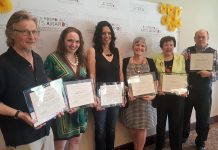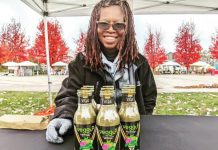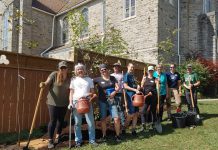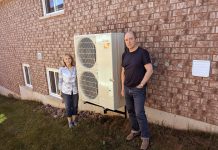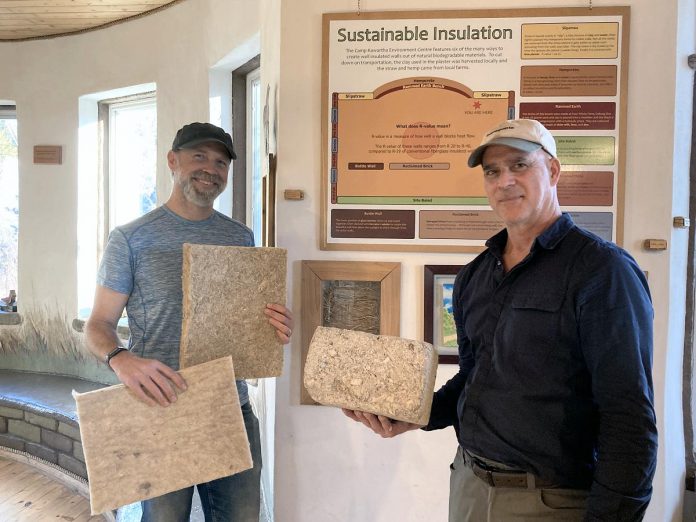
In the realm of architecture and construction, innovation isn’t confined to towering skyscrapers or sprawling complexes. As we work toward meeting Canada’s climate targets, there is a growing recognition of the need for more sustainable, cost-effective, and resilient building materials.
Traditional building materials like concrete and steel often have significant environmental costs, from the depletion of natural resources and high emissions during manufacturing and transportation.
By turning to alternative materials, we can reduce the negative impacts of conventional construction and create structures that are not only durable and sustainable, but beautiful as well.
“We can create spaces where both people and nature can thrive — where we welcome nature back to our built environment, where we mimic natural cycles in the building materials we use and in the way we design our buildings,” says Jacob Rodenburg, executive director of Camp Kawartha, a children’s camp and education facility that has been at the local forefront of building with natural materials.
Whether by utilizing carefully sourced materials or repurposing waste products, these approaches can be used by individuals, businesses, and communities to build more sustainable structures tailored to their unique needs and environments.
There are countless options for alternative building materials, but the local agricultural sector makes straw bale building and hempcrete especially attractive.
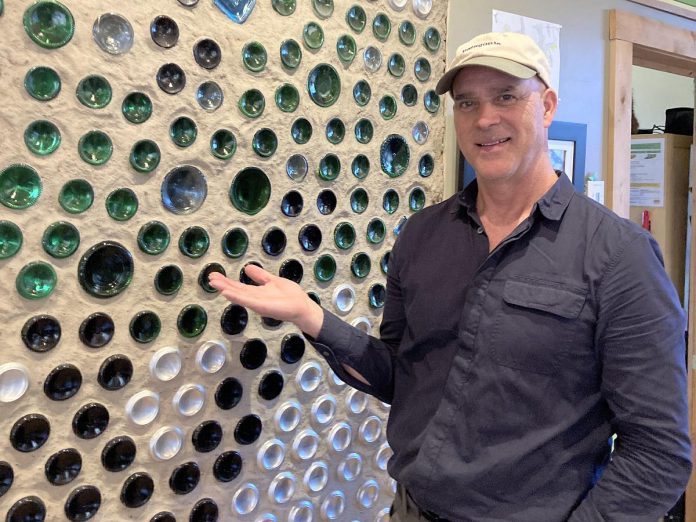
The practice of straw bale building is exactly what it sounds like: using straw bales that are stacked, then plastered or encased to form walls that result in a structure with excellent insulation properties. Straw is an affordable, readily available agricultural product that is easy to source locally.
Hempcrete is another alternative building material that can be created with locally produced agricultural products.
Hemp hurds are a byproduct made from the woody stem residue that makes up the largest portion of the hemp plant. These hemp hurds are mixed with lime and water to create a strong, lightweight, and breathable alternative to concrete. This material can then be used to build self-insulating walls.
Rammed earth building, another hyper-local approach to building, does not rely on agriculture for production. Instead, this type of construction involves compacting a mixture of earth, gravel, sand, and a binder into a frame using techniques called tamping or ramming to create a solid wall.
In some cases, the soil removed to create the foundation of the building can be the same soil used to form the walls while, in other cases, materials are sourced from local quarries.
This method has been practised for centuries around the world and is renowned for its durability and thermal mass, which means it can store heat and protect against temperature fluctuations. Rammed earth buildings are easily recognized by their natural aesthetic, with walls showcasing beautiful layers of distinct textures and colours of the materials used.
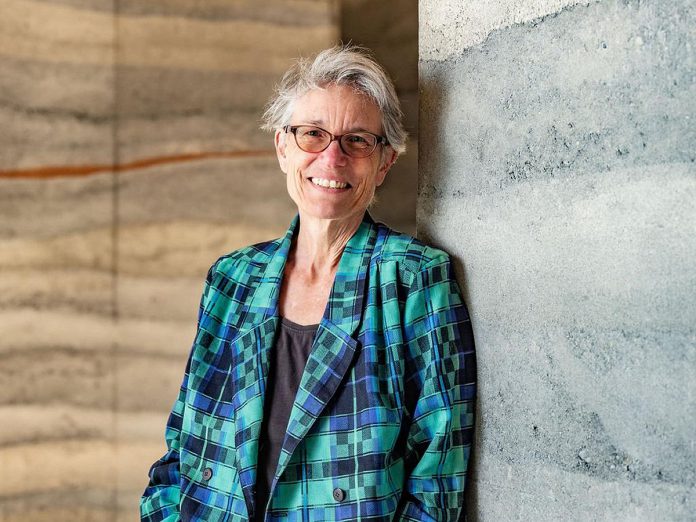
All of these materials will be showcased for the public to enjoy during the “Building with Sustainable Materials” tour and talk on Thursday, March 28th from 6 to 8:30 p.m. at the Camp Kawartha Environment Centre at 2505 Pioneer Road in Peterborough.
Built in 2009 by students of Fleming College’s former Sustainable Building Design and Construction program, the Environment Centre demonstrates various innovative approaches to green architecture such as straw bale walls, thatched roofing, hempcrete and slip-straw insulation, as well as geothermal heating.
“It’s a place that shows that it is possible to live differently, to regenerate our built spaces, and to welcome nature back home,” Rodenburg notes.
Hosted by Green Economy Peterborough and Farms at Work, the “Building with Sustainable Materials” event will feature a guided tour of the Environment Centre alongside presentations from Rodenburg, Sylvia Cook of Aerecura, and Sharon Inward of Inward Design and Consulting.
As space is limited, interested participants are encouraged to register early at eventbrite.ca/e/857569241687.









